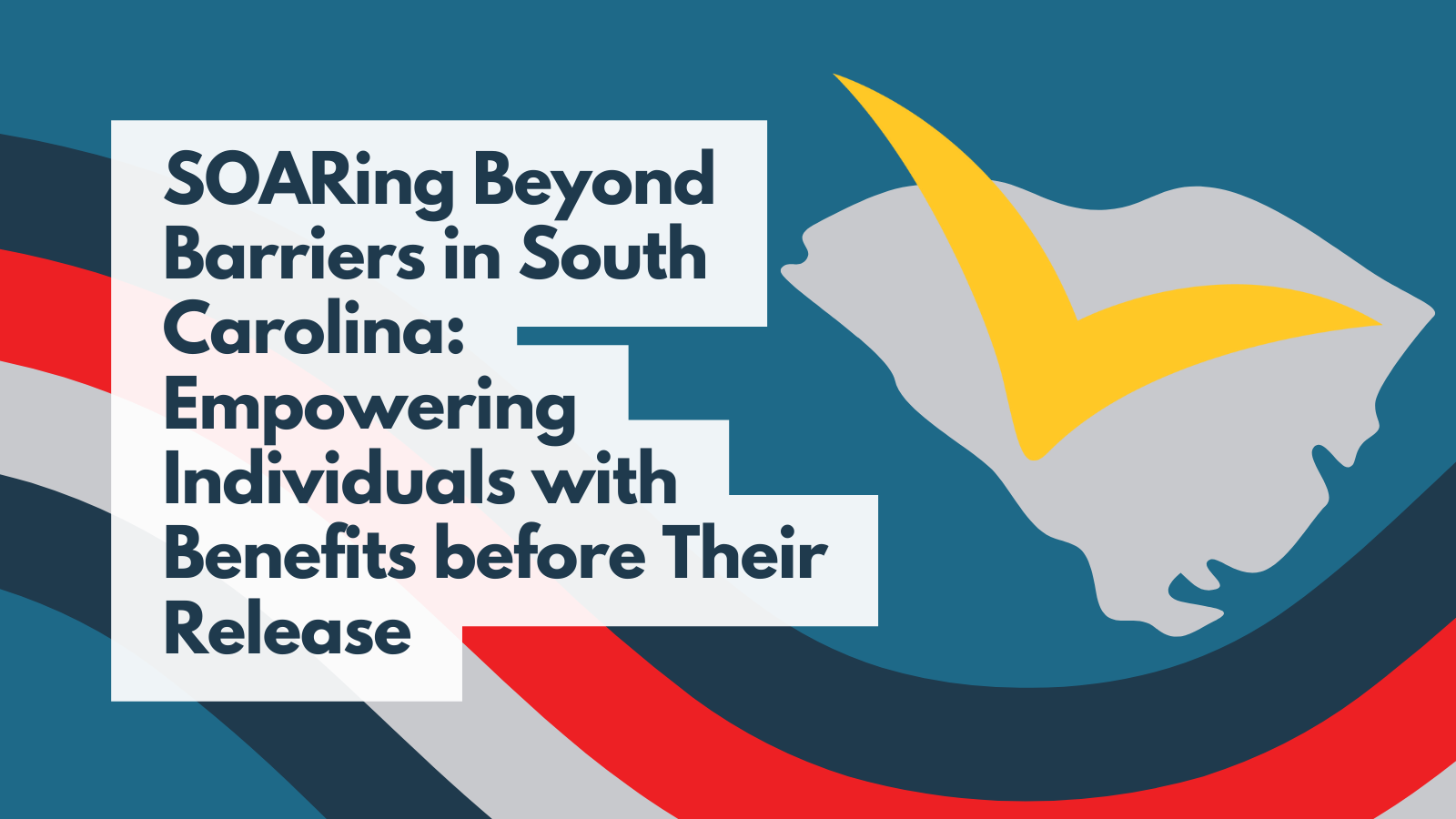Supplemental Security Income (SSI) and Social Security Disability Insurance (SSDI) provide needed income for people who are unable to work because of serious mental illness or other conditions. SAMHSA’s SSI/SSDI Outreach, Access, and Recovery (SOAR) program is dedicated to working with states and communities to help increase access to SSI and SSDI and thereby reduce homelessness and help people on their paths to recovery.
SOAR is focused on individuals experiencing or at risk of homelessness and has valuable applications for people in carceral settings to prevent homelessness upon release. Helping individuals with serious mental illness access income support and other benefits before they reenter the community can help reduce the many challenges that can come with having no means of income, including homelessness and recidivism.
Dazara Ware, MPC, assistant director with the SAMHSA SOAR Technical Assistance Center, is a strong advocate for connecting people to benefits while incarcerated. “The first 2 weeks after release from incarceration are the most critical. When someone with no money and who is too sick to work is put out into the community, they are at incredible risk of ending up in the hospital or back in jail or prison,” she says. “Our goal in using SOAR in carceral settings is ‘decision before discharge’—that is, approval for benefits before a person reenters the community.”
How Does SOAR Work?
SOAR promotes recovery and wellness through increased access to SSI and SSDI benefits. SOAR providers assist individuals with completing high-quality applications for SSI/SSDI. The SOAR process involves appointing a case worker to be the applicant’s representative, collecting and submitting medical records, creating the Medical Summary Report (MSR), obtaining medical co-signature to the MSR, and quality-checking the application to ensure it stands the best chance of approval. These critical components are proven to make higher-quality applications more likely to be approved. SOAR also helps case workers form collaborative relationships with the Social Security Administration (SSA), Disability Determination Services, community providers, healthcare organizations, and other community partners.
How Is SOAR Being Used in Legal Settings?
The South Carolina Department of Corrections (SCDC) uses SOAR in its prisons to help eligible individuals connect to SSI and SSDI benefits. What began as a grant-funded position is now a permanent role in the Complex Reentry Program across SCDC’s 21 institutions. Eligible individuals are referred to the SOAR program by prison behavioral health clinicians, and then SOAR case worker Shaquilla Heyward, MS, works with them on their applications. She is now one of three SOAR-certified individuals within the SCDC who can submit SOAR applications on behalf of people returning to the community. “We go through an extensive prescreening process and develop a detailed application to give them the best chance of approval,” says Heyward.
“South Carolina DOC has a pretty rapid turnaround compared to other states, from about 90 to 120 days” to complete and submit an application, says Terre Marshall, MPH, program director for complex reentry. “But, even so, we are often turning in applications just weeks before someone gets out.” While SSI/SSDI applications can be submitted up to 120 days before release, this often doesn’t occur because of the short duration of the individual’s sentence or the point at which they are referred to the SOAR program for support.
At SCDC, “the goal is to get them approved before discharge,” says Marshall. “We stay closely connected to individuals as they transition to the community, and their applications progress through the review process.” In these cases, the complex reentry team ensures their major needs—such as housing, Medicaid, mental health appointments, medication, food, and other needs—are met while they await the start of benefits. Many charitable housing providers are willing to take these individuals with the understanding that payment will be retroactive upon approval of benefits.
Some individuals come to the Complex Reentry Program having had SSI before incarceration and looking to get it reinstated post-release. SSA provides guidance on what happens to benefits during and after incarceration. Generally, if a person is incarcerated for more than 30 consecutive days, their SSI/SSDI payments will stop. However, they can get their SSI or SSDI reinstated by notifying SSA of the anticipated release date. SCDC has a prerelease agreement with SSA and will submit a release statement notifying SSA of the release date. Not all facilities have a prerelease agreement but can still notify SSA of an anticipated release for individuals who may be eligible for benefits.
How Many Incarcerated People Has This Helped?
This year, SAMHSA’s SOAR programming has led to 713 decisions for benefits for people experiencing incarceration nationally, with a 77 percent approval rate (508 applicants) in an average of 90 days to decision. This approval rate demonstrates how powerful this programming can be. “That’s 508 people who came out of incarceration with income to access housing and insurance to promote engagement in treatment. That means they can pay for somewhere to live and stop the cycle of homelessness to incarceration . . . reducing the cycle of homelessness to incarceration [overall],” says Ware. “Imagine the impact if we could get this program in prisons across the country.”
Conclusion
The SOAR program represents a potential bridge for individuals transitioning from incarceration, facilitating access to essential Social Security benefits. This effort not only aids in individual recovery and reintegration but also can contribute positively to community well-being. For those interested in supporting this initiative, training is available to become a SOAR provider.




